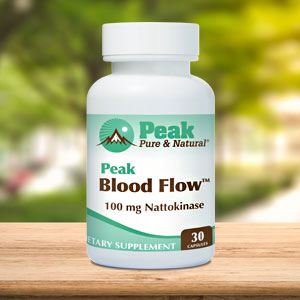Get Easy Health Digest™ in your inbox and don’t miss a thing when you subscribe today. Plus, get the free bonus report, Mother Nature’s Tips, Tricks and Remedies for Cholesterol, Blood Pressure & Blood Sugar as my way of saying welcome to the community!
The single most important way to avoid a blood clot

Thrombosis is a condition where a blood clot forms in one of your veins and obstructs the flow of blood. And the most common type — deep vein thrombosis (DVT) — can occur often in your legs.
DVT is pretty serious and can even lead to a dangerous condition known as a pulmonary embolism, where a blood clot travels from your legs (or some other deep vein) to your lungs and stops blood flow to your lungs.
If your day-to-day life includes long hours spent sitting in front of the computer, driving, traveling by plane or watching T.V. — like 70 percent of other adults who don’t get enough exercise — then you’re putting yourself at increased risk for this serious and potentially deadly health condition.
A few years back, researchers identified seven simple steps for reducing your risk of thrombosis:
- Being physically active,
- Avoiding smoking
- Following a healthy diet
- Maintaining a healthy body mass index
- Controlling blood sugar levels
- Maintaining healthy blood pressure numbers
- Controlling cholesterol
These are actually the American Heart Association’s seven indicators of heart health, but they work for blood clots too (and probably a long list of other diseases). People who follow these seven steps are 38 to 44 percent less likely to develop a blood clot.
But avoiding a blood clot could be even simpler than that — because the research says it may just be a one-step process…
Moving matters most to avoid thrombosis
Even when the American Heart Association published research linking its seven-step heart health program to a lower risk of thrombosis, they admitted there was one specific thing that was really the most important lifestyle factor to prevent a deadly blood clot…
And researchers from the Medical University of Vienna have confirmed it: Physical activity alone can decrease your risk of thrombosis and the complications that come with it. They even found that if you already suffer from thrombosis, a bit of exercise can turn your blood clot risk around quickly.
Women in the study who had blood platelet function that was indicative of blood clot risk were able to restore healthy platelet function by running for 40 minutes three times per week over the course of two months.
It’s a simple solution to a serious problem — and if you regularly slip into a sedentary slump, you should take it very seriously.
The truth is, living in this modern world makes it way too easy to fall into this type of sedentary state. But if you need more motivation to get moving, just remember this: Every five minutes, an American dies from a blood clot in his or her legs or lungs. And a bit of daily exercise can ensure you’re not one of them.
Editor’s note: There are perfectly safe and natural ways to decrease your risk of blood clots including the 25-cent vitamin, the nutrient that acts as a natural blood thinner and the powerful herb that helps clear plaque. To discover these and other secrets of long-lived hearts, click here for Hushed Up Natural Heart Cures and Common Misconceptions of Popular Heart Treatments!
Sources:
- “Facts about Physical Activity.” Center for Disease Control and Prevention.
- “Deep Vein Thrombosis.” Mayo Clinic.
- “Pulmonary Embolism.” Mayo Clinic.
- “Seven simple lifestyle steps may decrease risk of blood clots.” American Heart Association. ScienceDaily.
- Heber, A. Assinger, R. Pokan, I Volf. “Correlation between Cardiorespiratory Fitness and Platelet Function in Healthy Women.” Medicine & Science in Sports & Exercise, May 2016.














